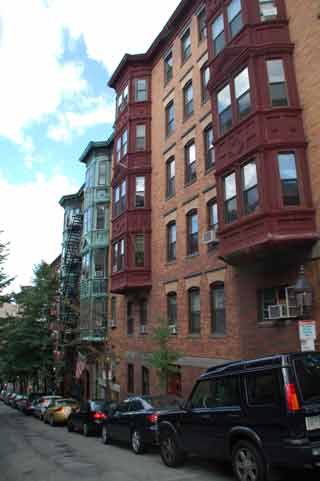
City and State: Boston, Massachusetts
Listed: 1966
Type of district: National Register historic district, Massachusetts State historic district, local historic district
Main Intersection: Louisburg Square, surrounded by Mt. Vernon and Pickney Streets
Beacon Hill National Register Historic District Report
Beacon Hill National Register Historic District Map
The most unusual aspect of Boston’s Beacon Hill neighborhood is that it is no longer a hill and there is no longer a beacon. The beacon that warned settlers about foreign invasions was dismantled after the Revolutionary War, and the steep slopes were excavated for their gravel and dirt to fill in nearby Mill Pond in the early 19th century. In the mid and late 19th century the so-called North Slope of the neighborhood was home to many immigrants living in modest dwellings, in contrast to the elegance of structures on the South Slope. Development of the South slope began in earnest following the completion in 1798 of the new Massachusetts State House.
A designer of a number of Beacon Hill’s structures, architect Charles Bulfinch’s vision for the area included stately mansions with wide lots. This did not entirely come true as 3- and 4-story brick row houses tended to dominate; however, the residential character with its brass door knockers, decorative iron work, window boxes, and ancient elms has been largely retained, along with gas lamps, cobblestone streets, and brick sidewalks. The preservation of these elements has played a significant role in the 20th century understanding and development of Beacon Hill.
